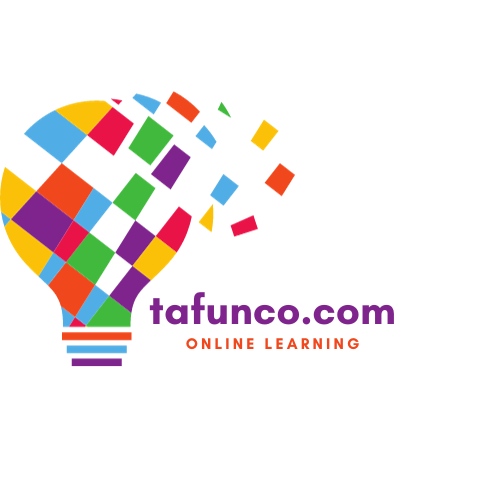The ever changing field of education is replacing conventional classroom approaches with creative models that blend the best aspects of both offline and online learning. The potential of blended learning, a pedagogical strategy that combines digital and conventional classroom experiences, to accommodate a variety of learning styles and improve the overall educational experience has led to its broad acceptance. This article examines blended learning approaches, their benefits, and ways that teachers may make the most of the online-offline combination for productive and interesting instruction.

Gaining an understanding of blended learning
A dynamic teaching approach called blended learning mixes in-person interactions with online activities and digital resources. This strategy acknowledges the diversity of student choices and provides more flexibility and customisation via a combination of conventional and online approaches. The flipped classroom, in which students study material online before participating in class discussions, is one example of blended learning. Other models include rotation models, which combine online and offline activities.
Blended Learning Models’ Benefits:
Adaptability and Usability:
When and where learning takes place may be flexible with blended learning. Learners may access online components whenever it’s convenient for them, enabling self-paced learning. Students with varied schedules, working adults, and adult learners will especially benefit from this flexibility.
Customized Education:
Teachers may customize learning experiences to meet the requirements of each unique student thanks to the integration of online and offline components. To make sure every learner gets the help they need, adaptive learning systems and data analytics may be used to monitor students’ progress and provide focused interventions.
Participation and Communication:
A healthy balance between digital and in-person encounters is promoted by blended learning. While online platforms include interactive simulations, discussion boards, and multimedia materials, the offline component enables in-person interactions, group projects, and practical experiences. Learners remain engaged and actively interested in their education because of this variation in participation.
Economy of Cost:
Institutions may save expenses related to conventional teaching materials by using online resources. Furthermore, since blended learning allows for greater flexibility in how teachers use resources, in-person sessions may be better used for interactive and collaborative activities.
How to Optimize the Online-Offline Blend:
Course design strategically:
Teachers must to carefully plan their curricula to take use of the advantages of both online and offline learning. Online courses may concentrate on information delivery, freeing up in-person sessions to prioritize problem-solving, application, and debate.
Technology Integration:
To improve the virtual learning environment, include state-of-the-art instructional technology. Traditional classrooms may function as venues for practical application and investigation, while virtual reality, augmented reality, and interactive simulations can provide immersive and captivating online education.
Consistent correspondence:
Blended learning approaches cannot succeed unless there is frequent and open communication. Teachers need to make sure that there are open lines of communication and that students can get help both online and off. In the classroom, this promotes a feeling of belonging and community.
Ongoing Evaluation and Input:

Use techniques for ongoing evaluation to track students’ development throughout the course. While in-person meetings provide possibilities for more nuanced evaluation, feedback, and conversations, online platforms may permit automated quizzes and evaluations.
Educator Professional Development:
In order to execute blended learning models with efficacy, educators must possess the requisite competencies and expertise. In order to provide educators with the skills necessary to use digital technologies, produce material for the internet, and modify their lesson plans to meet the particular requirements of blended learning, institutions should fund professional development programs. Teachers are guaranteed to be able to use technology to improve student learning via ongoing training.
Using Learning Analytics:
Make use of learning analytics to get information on the engagement and performance of your students. Teachers may discover areas of strength and weakness by using data on student interactions with course materials, which is often provided via online platforms. Personalized assistance and prompt interventions are made possible by this data-driven strategy.
Orientation and Support Services for Students:
Acknowledge that not every student has experience with virtual learning settings. Educate students with thorough orientation seminars that include expectations, digital tools, and accessible support resources. Students can confidently traverse both online and offline components thanks to a strong support system.
Possibilities for International Collaboration:
Cross-cultural communication and international cooperation are made possible via blended learning. Students may interact with classmates worldwide via online platforms, creating a vibrant and varied learning environment. Include group initiatives and conversations that take use of the worldwide reach made possible by internet components.
Mixed Education Environments:
Create physical learning environments that support both conventional and technologically advanced teaching approaches. Construct adaptable classrooms with collaborative workstations, audio-visual equipment, and interactive whiteboards. This guarantees a smooth learning experience by balancing the online and physical environments.
Integrating Feedback and Iterative Enhancement:
Ask teachers and students for their opinions on how well the blended learning approach is working. Review the assessment procedures, content distribution tactics, and course structure on a regular basis. ensure iterative changes to the model based on input to ensure sure it adapts to the changing demands of students and the educational environment.
Adding to the Prospective Difficulties and Upcoming Trends:
Even though mixed learning models have many advantages, it’s important to recognize and deal with any possible drawbacks. The digital divide is one major obstacle. Not every student has equal access to modern technology, fast internet, or appropriate gadgets. In order to fully realize the benefits of the online-offline mix, educational institutions and legislators need to endeavor to close this achievement gap and guarantee that every student has equal access to immersive, blended learning opportunities.
Furthermore, since technology is always evolving, instructors must keep up with the most recent advancements. Teachers must get ongoing professional development in order to acquire the skills necessary to successfully traverse new technologies and modify their teaching strategies. In order to foster a culture of learning and creativity among educators, institutions should fund continuous training initiatives.
As we look forward, the following trends will influence blended learning going forward:
1. Integration of Artificial Intelligence (AI):
By further customizing education, artificial intelligence (AI) has the potential to transform blended learning. AI-powered adaptive learning systems may evaluate student performance data to customize material delivery, pinpoint areas for development, and provide focused assistance. This customized method improves the effectiveness of both online and offline learning elements.
2. Immersive Technologies:

Access to augmented reality (AR) and virtual reality (VR) is growing. By incorporating these immersive technologies into blended learning, realistic and captivating simulations may be created, giving students a more hands-on approach to learning subjects. This method works particularly well in scientific, medical, and technical domains.
3. Credentialing using Blockchain:
The need for adaptable and alternate learning paths is increasing, and blockchain technology is becoming a useful tool for transparent and safe certification. Blockchain technology may be used by blended learning programs to provide credentials that are portable and verifiable, giving students a platform to demonstrate their knowledge and abilities outside of the conventional academic record.
4. Gamification and Microlearning:
Interactive challenges, leaderboards, and badges are examples of gamification components that may improve participation in online courses. The delivery of material in brief, targeted units—known as microlearning fits very well with the rapidly evolving digital landscape. Blended learning’s online component may become more engaging and dynamic by including these components.
5. International Cooperations and Interinstitutional Alliances:
Students may access courses and materials from several educational providers thanks to blended learning, which also makes cross-institutional cooperation easier. In addition to enhancing learning, this interconnection helps students develop a global perspective and gets them ready for a varied and interconnected world.
Examining Blended Learning’s Social and Emotional Aspects:
Examining blended learning’s social and emotional components is crucial, in addition to its technological and administrative components. Peer connections, cooperation, and social interactions are all naturally facilitated in traditional classroom settings. To the fullest extent possible, the online-offline mix should strive to imitate and improve these components in a digital setting.
1. Digital Cooperation Resources:
Including collaboration capabilities in online platforms may help people feel more connected and participate. Students may interact, exchange ideas, and work together on assignments via discussion boards, group projects, and online study sessions. In order to replicate the social dynamics of a typical classroom, several technologies are essential.
2. Soft Skills Emphasis:
The potential to give priority to the development of critical soft skills is presented by blended learning. In-person sessions might place more of an emphasis on problem-solving, cooperation, and communication than online courses, which concentrate on information delivery. Encounters with peers, discussions, and lectures in a traditional classroom environment support students’ overall growth.
3. Education on Digital Citizenship:
Giving pupils advice on digital citizenship is essential as they navigate online environments. In the virtual world, educators may include lessons on digital etiquette, responsible online conduct, and critical thinking. These abilities are necessary for students to participate in online forums and group projects in a courteous and productive manner.
4. Services for Social-Emotional Support:
Institutions should place a high priority on students’ mental health and well-being in light of the possible difficulties they may encounter in a mixed learning environment. Peer support groups, mindfulness materials, and online counseling services may all be included into blended learning’s digital component to provide students emotional support.
5. Diverse and Inclusive Learning Settings:
Different learning requirements and styles may be accommodated by designing blended learning models. Different learning styles may be catered for via online resources, and in-person sessions can provide further personalization and assistance. This inclusiveness guarantees that learners from different backgrounds and skill levels may flourish in the classroom.
6. Involvement of Parents:
A blended learning approach involves parents becoming more involved in their child’s education. The home-school relationship is strengthened by offering resources, frequent reports on student achievement, and opportunities for family engagement in both online and offline activities. This kind of cooperation makes learning more encouraging and fulfilling.
7. Reflection and Ownership by Students:
Motivate pupils to take responsibility for their educational path. Online resources may be used for goal-setting, self-evaluation, and reflective activities. Then, offline sessions serve as forums for talking about these thoughts, creating new goals, and getting advice from educators.
In summary:
Blended learning models are a potent advancement in the field of education, providing a flexible and well-rounded approach that meets the various demands of students. Teachers may build dynamic and engaging learning experiences that equip students for the challenges of the contemporary world by deliberately integrating the capabilities of online and offline components. The possibilities for creative and successful blended learning models are endless as technology develops, offering an exciting new direction for education.



